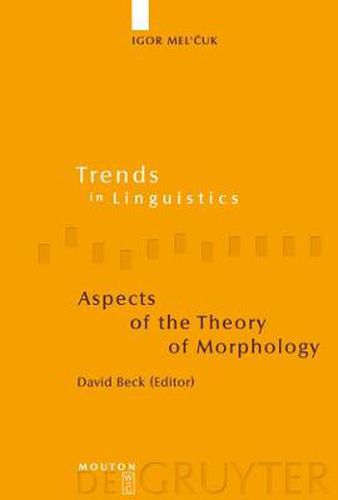Readings Newsletter
Become a Readings Member to make your shopping experience even easier.
Sign in or sign up for free!
You’re not far away from qualifying for FREE standard shipping within Australia
You’ve qualified for FREE standard shipping within Australia
The cart is loading…






This title is printed to order. This book may have been self-published. If so, we cannot guarantee the quality of the content. In the main most books will have gone through the editing process however some may not. We therefore suggest that you be aware of this before ordering this book. If in doubt check either the author or publisher’s details as we are unable to accept any returns unless they are faulty. Please contact us if you have any questions.
The book is dedicated to linguistic morphology; it contains a sketch of a complete morphological theory, centered around a discussion of such fundamental concepts as morph vs. morpheme, inflectional category, voice, grammatical case, agreement vs. government, suppletion, relationships between linguistic signs, etc.: the hottest issues in modern linguistics. The book introduces rigorous and clear concepts necessary to describe morphological phenomena of natural languages; among other things, it offers logical calculi of possible grammemes in a given category. The presentation is developed in a typological perspective, so that linguistic data from a large variety of languages are described and analyzed (about 100 typologically very different languages). The main method is deductive: the concepts proposed in Aspects of the Theory of Morphology are based on a small set of indefinibilia and each concept is defined in terms of these indefinibilia and/or other concepts defined previously; as a result, logical calculi can be constructed (similar to Mendeleev’s Periodical Table of Elements in chemistry). Then the concept is applied to the actual linguistic data to demonstrate its validity and advantages. Thus, Aspects of the Theory of Morphology combines metalinguistic endeavor (a system of concepts for morphology) with typological and descriptive orientation. It reaches out to all students of language, including the border fields and applications.
$9.00 standard shipping within Australia
FREE standard shipping within Australia for orders over $100.00
Express & International shipping calculated at checkout
This title is printed to order. This book may have been self-published. If so, we cannot guarantee the quality of the content. In the main most books will have gone through the editing process however some may not. We therefore suggest that you be aware of this before ordering this book. If in doubt check either the author or publisher’s details as we are unable to accept any returns unless they are faulty. Please contact us if you have any questions.
The book is dedicated to linguistic morphology; it contains a sketch of a complete morphological theory, centered around a discussion of such fundamental concepts as morph vs. morpheme, inflectional category, voice, grammatical case, agreement vs. government, suppletion, relationships between linguistic signs, etc.: the hottest issues in modern linguistics. The book introduces rigorous and clear concepts necessary to describe morphological phenomena of natural languages; among other things, it offers logical calculi of possible grammemes in a given category. The presentation is developed in a typological perspective, so that linguistic data from a large variety of languages are described and analyzed (about 100 typologically very different languages). The main method is deductive: the concepts proposed in Aspects of the Theory of Morphology are based on a small set of indefinibilia and each concept is defined in terms of these indefinibilia and/or other concepts defined previously; as a result, logical calculi can be constructed (similar to Mendeleev’s Periodical Table of Elements in chemistry). Then the concept is applied to the actual linguistic data to demonstrate its validity and advantages. Thus, Aspects of the Theory of Morphology combines metalinguistic endeavor (a system of concepts for morphology) with typological and descriptive orientation. It reaches out to all students of language, including the border fields and applications.